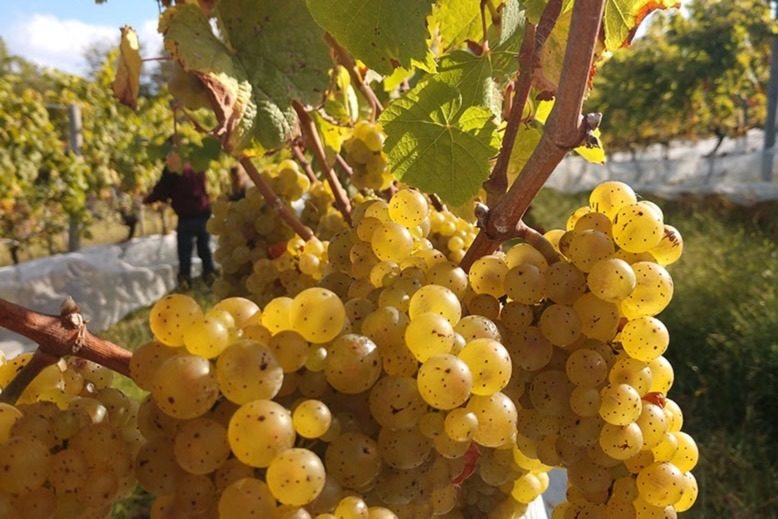
Of all white grape varietals, the most widely planted in the world is chardonnay. It thrives in all kinds of regions (including here in Jersey) and is extremely versatile, the basis for affordable, everyday quaffs all the way up to coveted, age-worthy white Burgundies and decadent bottles of Champagne.
Yet despite its renown, chardonnay remains one of the most polarizing wines. People tend to love it or hate it.
That’s because many wine drinkers associate the grape with the big, buttery, barrel-fermented styles that spiked in popularity in the ’80s and ’90s. Anyone who’s tasted a Kendall-Jackson chardonnay knows what I’m talking about. Powerful aromas of buttered popcorn, vanilla and toasted oak jump from the glass.
At one time, these assertive flavors appealed to Americans. But among a certain group of wine drinkers and sommeliers, they fell out of favor almost as quickly as they rose to fame, even prompting a backlash known in the industry as the ABC movement—Anything But Chardonnay.
“Even today, people come in and say ‘I’ll do anything but a chardonnay,’” says Chris Cree, owner of Cree Wine Company in Hampton, where he offers more than 50 wines by the glass in addition to extensive wine flights. New Jersey’s only certified Master of Wine, Cree loves to challenge the prevailing perception of the grape, often finding that patrons don’t actually hate chardonnay, they just dislike certain styles of it.
Of course, there’s more to chardonnay than butter and oak, which are winemaking styles rather than inherent properties. Now, it seems, wine drinkers are waking up to its nuance and beauty. “I first noticed it a few years ago—this sort of push back from the heavier, richer, oakier styles, especially those from California,” says Cree. “People are looking for lighter, fresher, brighter wines that are less heavy, less oaked, and with less alcohol.”
When it doesn’t undergo oak treatment and is instead fermented and aged in stainless steel, chardonnay can be refreshing and crisp, with notes of green apple or lemon. Cree compares the profile to sauvignon blanc or pinot grigio, wines on the opposite side of the white spectrum from oaked chardonnay. “The lighter, unoaked styles,” he says, “go with a much wider range of foods, from shellfish and seafood to sushi, crudo, ceviche.”
New Jersey winemakers are seeing consumers come around. Hammonton’s Sharrott Winery, as well as Working Dog Winery in Hightstown, highlight the natural fruity essence of the grape in bottlings fermented only in stainless steel. Unionville Vineyards in Ringoes recently released their 2022 unoaked chardonnay, a zippy and floral beverage, easy to drink and easy to pair. The estate also makes several variations of chardonnay, oaked and unoaked.
Unionville general manager John Cifelli says there’s room for both styles. “Our use of oak is so gentle that it’s not like someone who likes our oaked chardonnay is not going to enjoy the unoaked version, because our oaked version is just a hop, skip and a jump from our unoaked,” he says. “They’re both pretty delicate and well-rounded.”
No matter which style you prefer, the Garden State has options that please. So when drinking local, consider a new definition of ABC: Always Buy Chardonnay.
No one knows New Jersey like we do. Sign up for one of our free newsletters here. Want a print magazine mailed to you? Purchase an issue from our online store.



